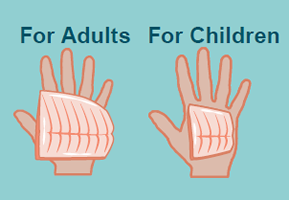Lake Oroville
Advisory based on mercury or PCBs
This is an update of the report issued in December 2012 for Lake Oroville. In 2013, the California Department of Fish and Wildlife changed the legal size for black bass to 12 inches or longer, instead of the previous slot limit of 12 to 15 inches. As a result, some bass that were legal to keep and consume in 2012 are now not legal to keep. The advisory and the report have been updated to reflect that only legal-sized fish have been used in the evaluation.
For information relating to biotoxins from harmful algal blooms (HABs) that may be found in California water bodies, see below.
Waterbody
Women 18-49 Years and Children 1-17 Years
Women 50 Years and Older and Men 18 Years and Older
What is a serving?

The recommended serving of fish is about the size and thickness of your hand. Give children smaller servings. For small fish species, several individual fish may make up a single serving.
Preparing and Cooking Fish
- For fish, eat only the skinless fillet.
- For shellfish, eat only the meat.
- Some chemicals are higher in the skin, fat, and guts.
- Remove and throw away the skin before cooking.
- Cook thoroughly and allow the juices to drain away.
![]() = Fish that are high in omega-3s and you can eat them at least once a week.
= Fish that are high in omega-3s and you can eat them at least once a week.
Eating fish with omega-3s can lower heart disease in adults and help babies’ brains to develop.
Resources related to Biotoxins and Harmful Algal Blooms
Harmful algal blooms are increasing in California and may occur throughout the year in some water bodies. OEHHA recommends that you check the California harmful algal bloom (HAB) portal to see if a bloom has been reported at this water body and learn healthy water habits to protect yourself, your family, and your pets during your visit.
Fish, Incident Response, Seafood Safety, and Harmful Algal Bloom Section
Sacramento Office
1001 I Street
Sacramento, CA 95814
Phone: (916) 324-7572
Fish@oehha.ca.gov







